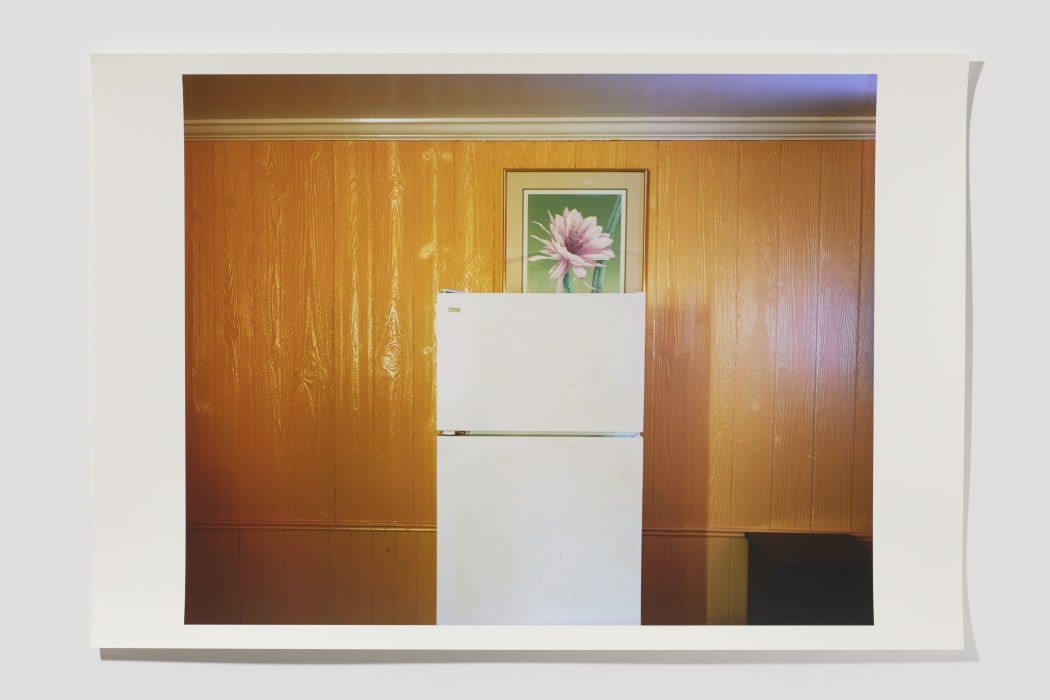
Eric Cousineau is a photographer with artistic and commercial practices. He holds a degree in photography from Oakland Community College and received a BFA from College of Santa Fe in 2003. Cousineau studied with documentary and art photographers David Scheinbaum, Steve Fitch, Nancy Sutor, and Tony O’Brien. Born in Iowa City and raised in Flushing Michigan, Cousineau currently resides in Santa Fe, NM.
As part of Cousineau's participation in form & concept's latest group show Salt Pillars, the artist treated curious patrons to a discussion of previously unexhibited photographs and selected works from his American Motel series. The talk was moderated by gallery director and curator Jordan Eddy. The following transcript is excerpted from that talk, and has been edited for clarity and brevity.
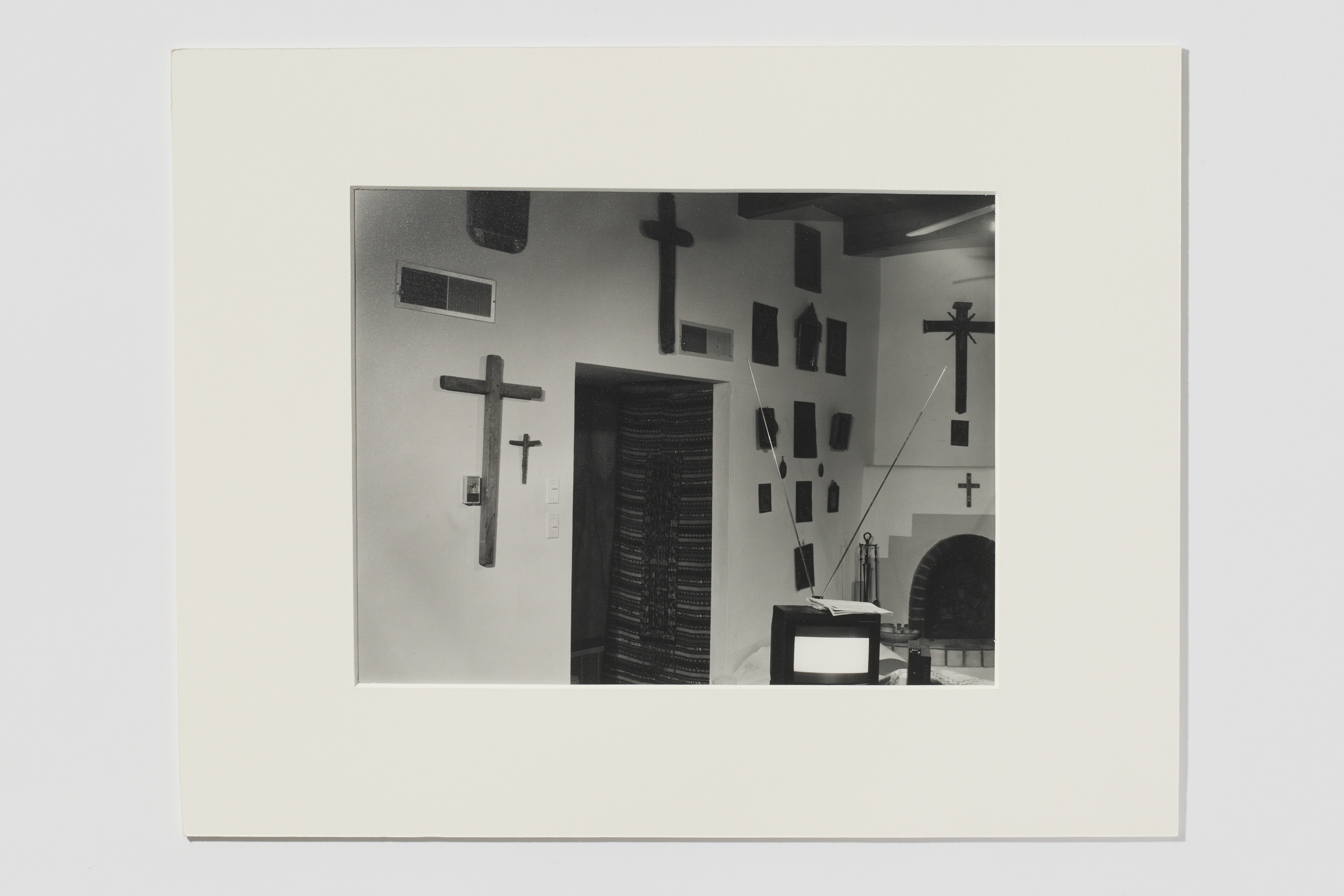
Untitled, Eric Cousineau
Jordan Eddy: For context, this exhibition, Salt Pillars, began taking shape when I discovered this stack of old black-and-white photographs called the T.V. series in Eric's studio during a studio visit. As Eric and I talked about that series, I realized there was this visual connection to Eric's continuing body of work, American Motel, but there was also this pervasive atmosphere of loss, grief, and memory that I found compelling. Eric, I'm curious if you could talk a little bit about the context of the black-and-white photographs and the context of the American Motel series and maybe the links between them.
Eric Cousineau: It all kind of starts with Addiction.

Addiction, Eric Cousineau
Addiction was the first time I took a photograph with a 4x5 camera. I took it in December 1999 shortly after my younger brother passed away in a car accident. He was 16. I was 22. I was dealing with a lot. So I started using vices to deal with what I was feeling, mainly alcohol—Ah shit.
JE: And we don't have to get too much into the backstory because I know it's a loaded subject, but I'm interested in hearing about some of the technical aspects of the image.
EC: It's an eight-hour exposure that I took while I was living in Detroit, that's all I got right now.
JE: Right and over that eight-hour exposure, the static on the TV is transforming into this white glow that is one of two light sources in the image, the other being an obscured lamp on the left. What caught my eye, and this photo was actually at the very top of the stack of photos, was how these two light sources are casting light toward each other across this field of bottles. But when I asked you about these photos, you said you hadn't thought about them in years. And I'm curious if now, looking back, you have any insight as to why you chose TVs as the subject matter for these pieces.
EC: So, I use watching movies or TV to deal with trauma. It's comforting for me. During this time, I would watch movies over and over again, like Evil Dead 1 & 2 and Army of Darkness, and just zone out. Go into the TV. For the longest time, that was my world. I didn’t pay attention to anything outside of that, except photography.

Untitled, Eric Cousineau
JE: And your passion for photography follows us through each of the photographs in this series, almost like a documentary. Could you tell us a little bit more about the other locations where these photos were shot? Maybe starting with the Calle Lorca house story.
EC: So the Calle Lorca house is the one in the middle, all the way to the right.

Untitled, Eric Cousineau (The Calle Lorca house).
That house was where my punk rock band had practice. While I was at the College of Santa Fe, the house became notorious for its wild parties. Rumor would spread around campus that there was a party happening and people would show up on our doorstep expecting to party, even though nobody at the house had invited anybody or planned a party. People would just show up and debauchery would ensue. Neighbors were afraid to call the cops. People were passed out drunk in, well, everywhere. I remember one time my friend walked down to Allsups in his underwear to get a burrito. It was a wild house.
JE: And what about the crucifix on the top right? What's the story there?
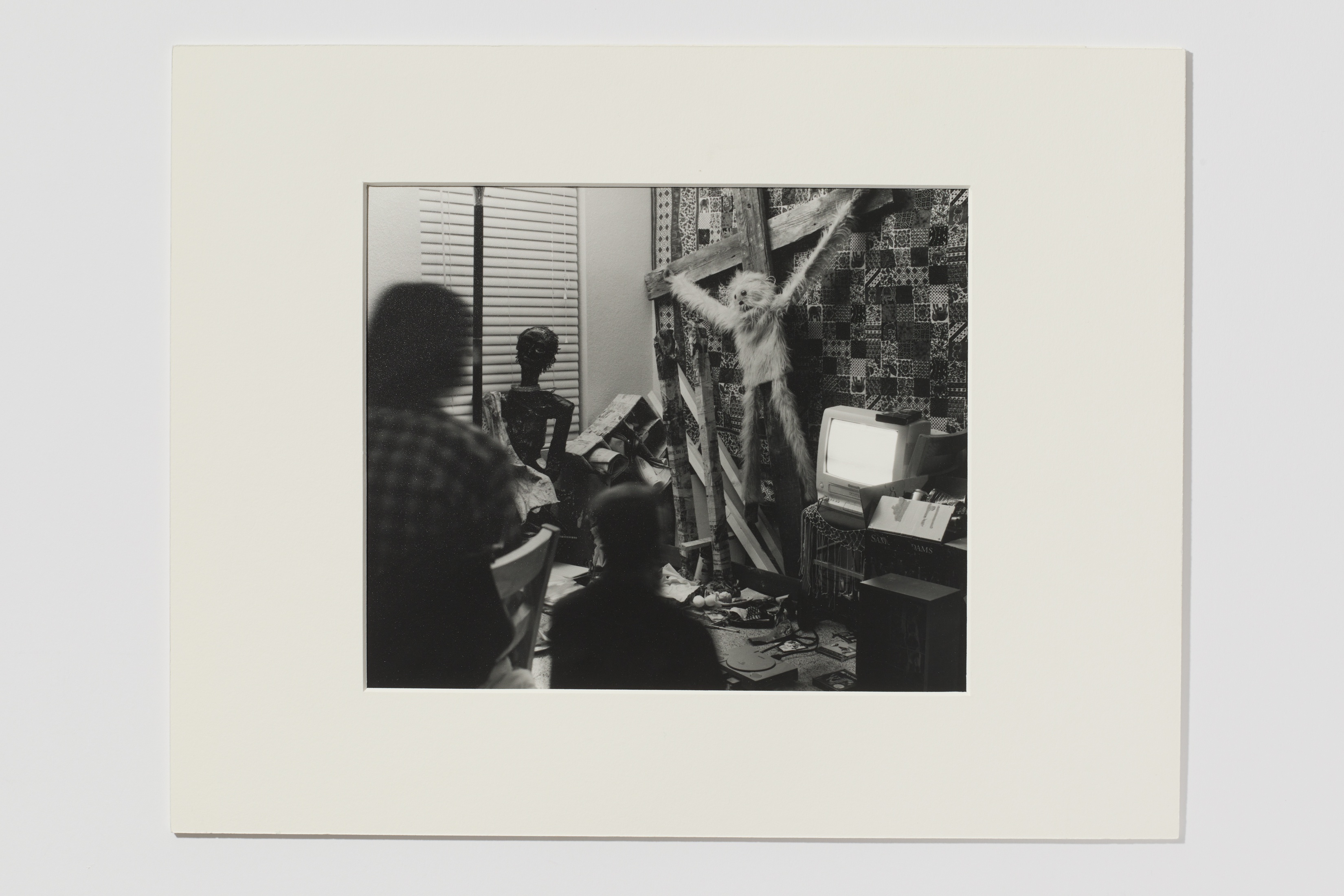
Untitled, Eric Cousineau
EC: The christ muppet? Oh, yeah. We had to sacrifice that during a show at our house. Somehow I got stuck with it. During the summer, when I had to stay in the campus dorms, I would drag the thing from my apartment to the dorms and back again once classes started. I don’t know what happened to it. But it hung around my place forever.
JE: I think that photo sheds light on the punk rock scene you were a part of when you were younger. You can see the raw edge of punk rock in a lot of the black-and-white photographs. It got me thinking about the emotion you must have been dealing with at the time of your brother's passing and the sort of cathartic release that happens on stage when you're playing a show. Could you talk about the excerpt provided by your friend Shaun that is paired with this piece?
EC: Shaun was a part of Thoughts of Ionesco, which only lasted something like three years. The Ionesco shows were wild. I’m trying to place it in my memory. I think during that time, Shaun was going through some stuff. He had lost his father and sister. And it was around the same time that my brother passed away, so we were all dealing with a lot. There's one particular memory of Shaun seared into my memory of him hanging upside down from a rafter in the basement of a vacant grocery store in Pontiac, Michigan, screaming into the mic during a show. He would run head-first into drywall. It was chaos. Offstage he was one of the nicest people you'd ever meet, but on stage, he was chaotic, manic because he was getting all of his pain and suffering out. People in the audience didn't know that though. They were scared shitless of him when he was on stage.
JE: Right, right, that story made me this anger or fury that seems to be performed in a lot of punk rock. I started thinking about the spaces where these unsavory emotions are processed, as well as, the atmosphere of rebellion that surrounds the shows. I'm curious to know if you have any reflections about the spaces of these old photographs.
EC: These photos were taken 23, maybe 24 years ago. I hadn't given them much thought until you started asking about them. I'm not sure I've sorted it out yet.
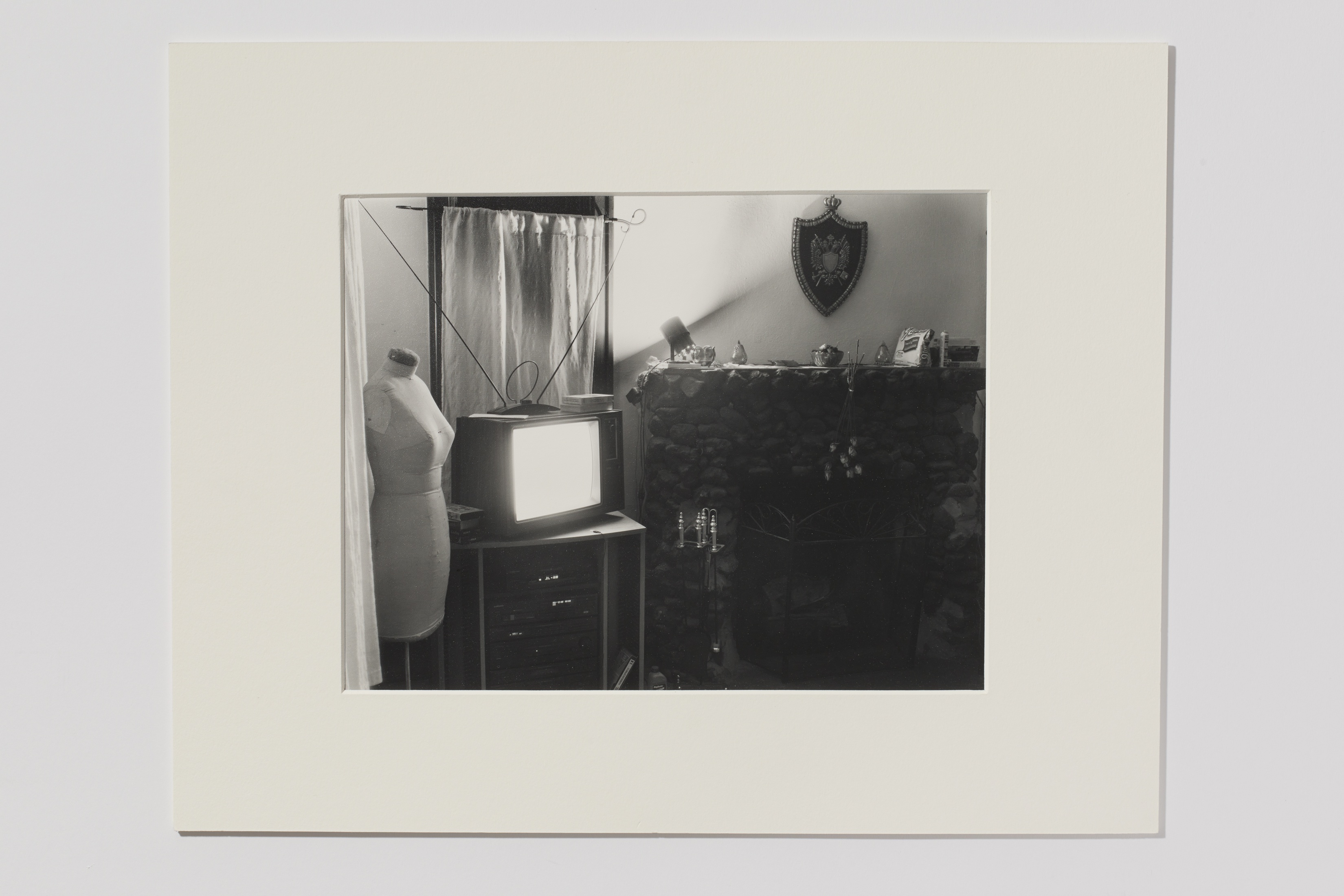
Untitled, Eric Cousineau
JE: Did you ever think these photos would wind up on a gallery wall?
EC: No. Not at all. In fact, I texted my friend whose bedroom it is in that bottom left photograph to tell him it was in a show, and he was like, “Holy shit, dude. Seriously? That shithole is hanging on a wall in a gallery?” (audience laughs).

Untitled, Eric Cousineau (The room in question).
JE: That is funny. Let’s move forward in time to a body of work that has been exhibited before, your American Motel series.

Office Open, Room 1, Eric Cousineau, from the American Motel series.
EC: That series all started with a road trip to see Page 99’s last show ever, which they wound up doing a reunion show later, jerks. And, yeah, so my friends and I made a two-week road trip out of it. We were broke. We barely had money to make it there and back, so we were looking for the cheapest rooms possible, which were always at old roadside motels. I think our price point was $25. We stayed in some really shady places. In one of the rooms, there was this red shag carpet and these wood panel walls, and I said to myself, "I need to photograph this."
JE: What was the shade of the carpet? Was it violently red?
EC: Yeah, totally. I wanted to shoot it in color, but I only had 35mm black and white at the time. So when I got back from that trip, I think I bought a D Graflex 4x5 camera and some color film. I think the first photo I took was in 2004, the green shower one. Whenever I traveled I took my camera with me, and I still do. I’ve been working on this series for over two decades.
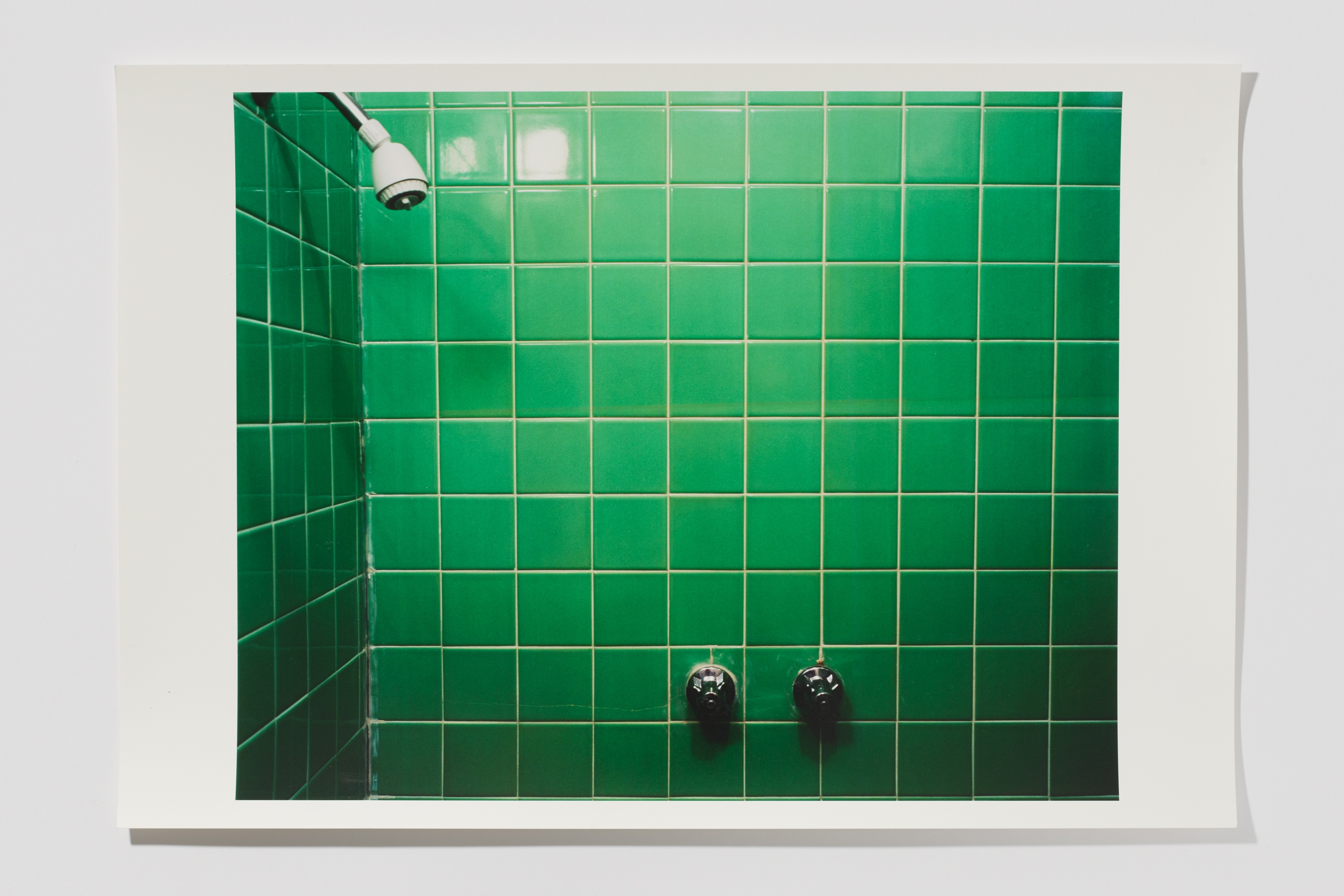
Green Shower, Room 31, Eric Cousineau, from the American Motel series.
JE: And what was it about the subject matter that attracted you? Did you find yourself in these strange places?
EC: Yeah, I always seem to wind up in weird places. Not on purpose. It just happens. I walk in, and it feels like, “Oh, ok, this is happening now.” What do I do with this? And you know, in this case, I decided to make a project out of it. At first, I was trying to ask for permission to go in and photograph these rooms, but the owners would get defensive and tell me to leave. So I started renting the rooms instead.
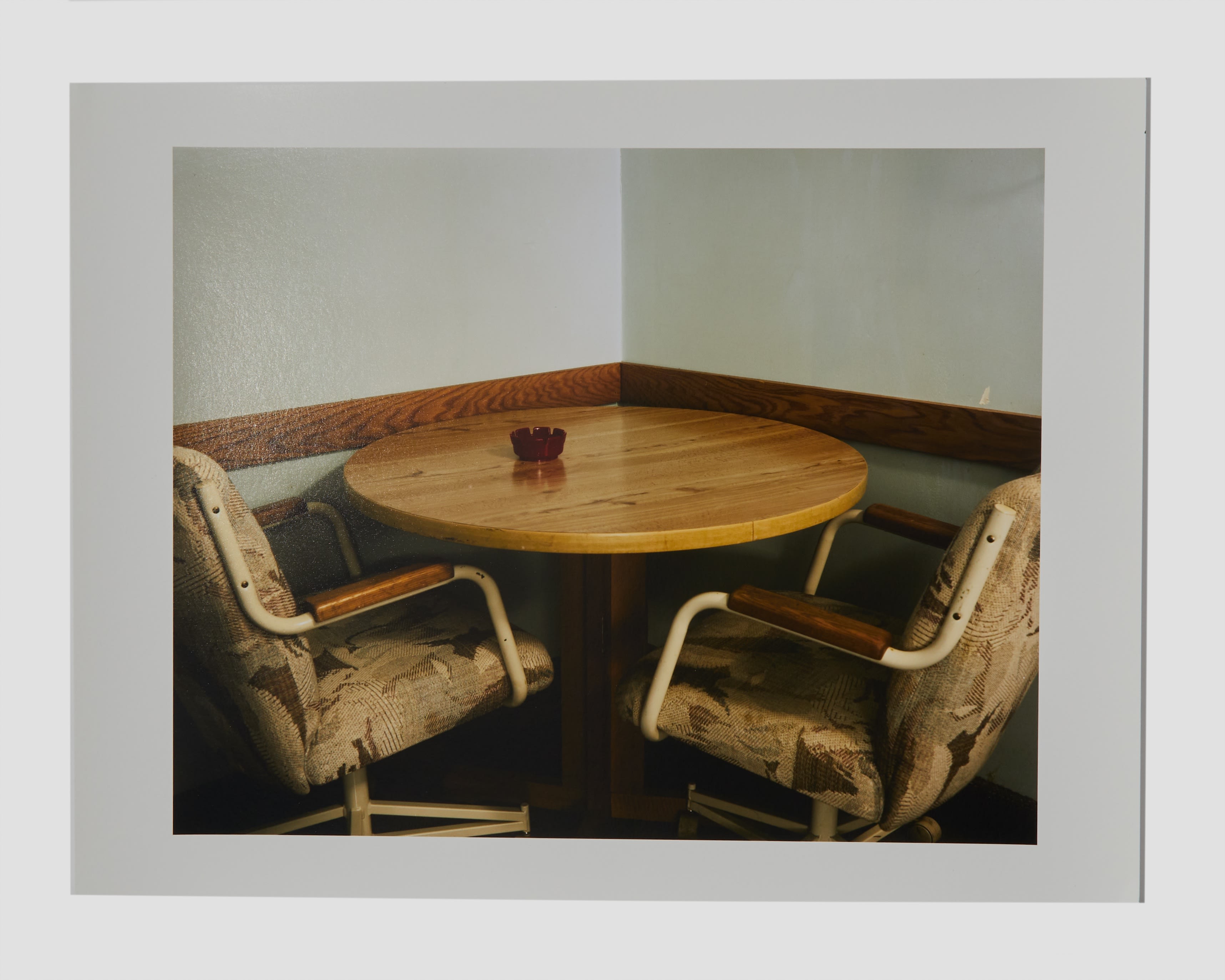
Red Ashtray, 272, Eric Cousineau, from the American Motel series.
JE: And are those rooms roughly the same price as they were when you went to see Page 99?
EC: The price has gone up with inflation, but it’s still right around 25, 30 bucks. Every time I work on the project I’m kind of rolling the dice since I can't scout the interiors ahead of time. But I always take photographs no matter the room. Sometimes I don't like the photos, but occasionally that changes when I revisit the negatives later. I’m looking at a few right now in the studio that I have never released.
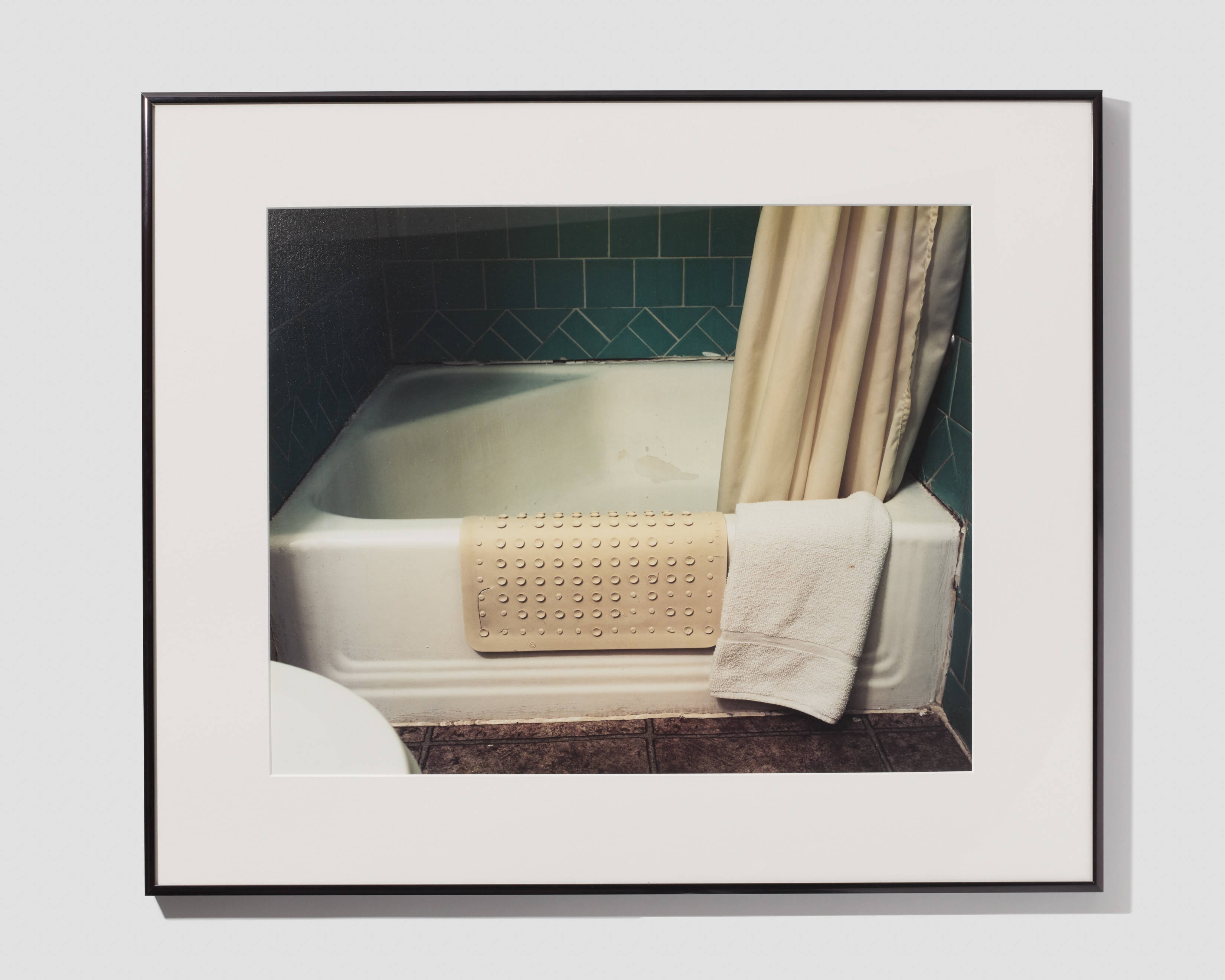
Shower, Room 3, Eric Cousineau, from the American Motel series.
JE: It would be interesting to see those photos and see what other echoes there are between these two series. Speaking of echoes, another echo is this feeling of decay. You feel these worlds shimmering and coming apart at the seams, a feeling that is also echoed by the title of the show, which references the Shirley Jackson short story Pillar of Salt, in which two tourists are walking around New York City, watching the city as it comes apart at the seams. Obviously, there is also a TV motif present in both series, but I’m curious if you saw what I saw, which was an eye for these overlooked spaces where things tend to come apart.
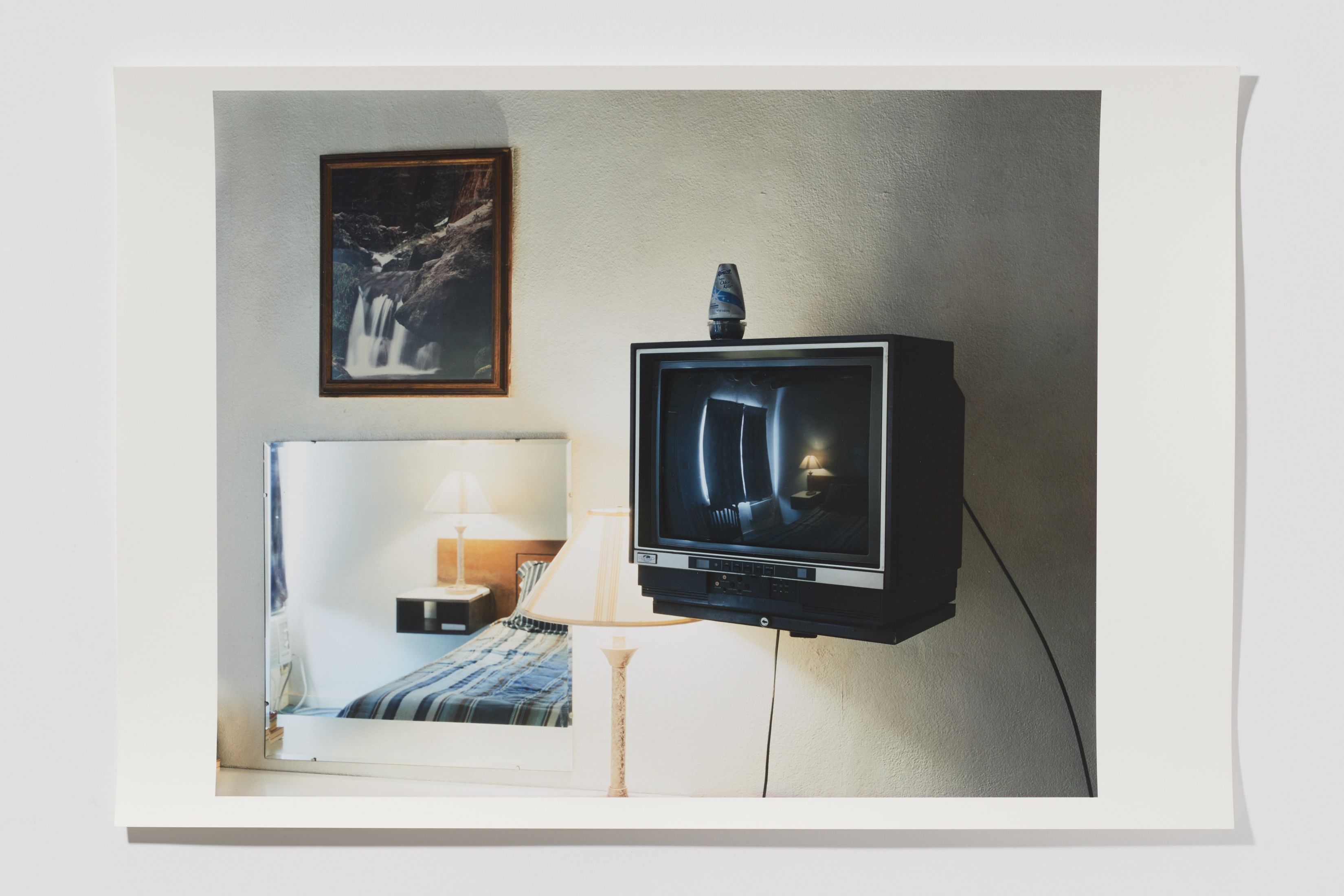
TV, Room 14, Eric Cousineau, from the American Motel series.
EC: Yeah, I mean they are rooms, living spaces, these are places where multiple people come through with their own personal history. In the earlier black-and-white series, all of the houses are rental spaces. My friends and I weren’t the first or the last people to live in those spaces. When I drive by the Calle Lorca house, I think to myself, "That's awesome." The people living there don’t know the history of the house. They don’t know my era in that house. That's interesting to me.
And speaking of history, in the American Motel Series, some of the stuff I’ve seen in those rooms is disgusting. I remember for the microwave photo, I had been driving for something like 12 hours, so I needed to rest, but the room was so gross that I slept in my hoodie with the hood drawn so tight around my head that only my eyes were peeking out. Normally, I toss and turn when I sleep, but I woke up in that room in exactly the same position I had fallen asleep in because I was so afraid to move on the bed.
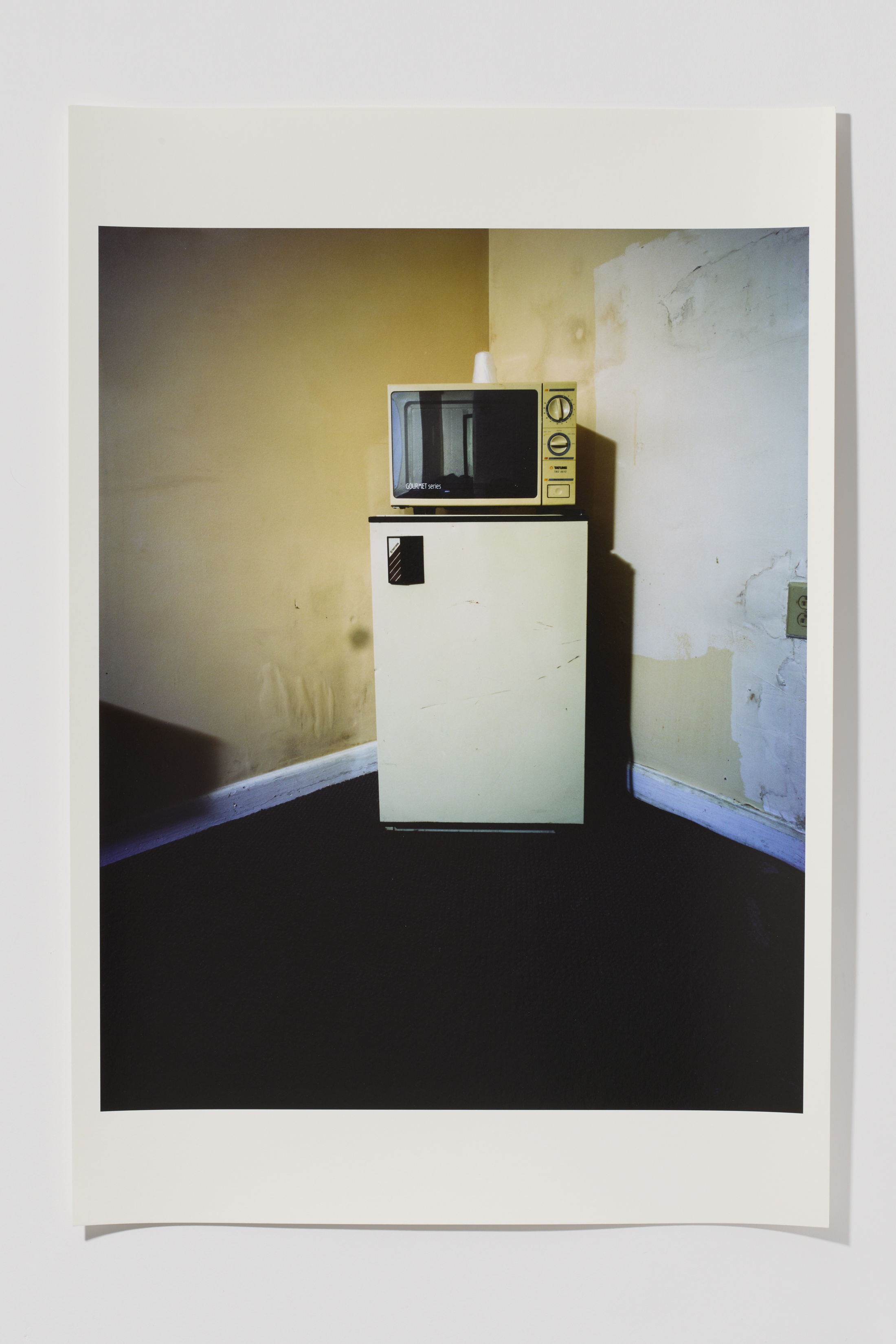
Mini-Fridge, Room 112, Eric Cousineau, from the American Motel series.
JE: And I think these stories of your experience with the rooms is what makes this series so special because it reminds us that you're not the only person to stay in these rooms, which is exactly what New Mexico Museum of Art photography curator Kate Ware picked up on during her studio visit with Eric. During her studio visit with Eric, she jotted down this noir-ish, imagined narrative of a family traveling from place to place. I think that flash fiction story picks up on the importance of transience and space in both of these series, whether it’s for a party or a stop-off on a road trip. In a way, all of these spaces become vessels of human memory and emotion, which reminds me of something someone said during the opening last night, that the motel room is a perfect metaphor for life: We are just people passing through, and before you know it, it's time for check out. This pervasive temporality in this work really opened up a larger narrative for this show. Every piece in this show represents a figurative emotional vessel in one way or another. So, Eric, one final question that has been in the back of my mind before we wrap up: Do you ever arrange objects in the motel rooms?
EC: No, I don’t arrange anything. That’s how everything is. Even in the strange ones where things look staged, like the one with the full-size refrigerator but nowhere to cook. If I do move anything, it’s to place the camera in a specific location because I can't do handheld shots with a long exposure. Many of these are exposures of 30 seconds or more, so in some of these photos, I was literally lying down on the floor of these nasty motel rooms, clicking the shutter from my release and staying on the ground while the photo was exposed.

Floral, Room 17, Eric Cousineau, from the American Motel series.
JE: That is pretty gross, but it makes for compelling work. Well, thank you so much, Eric, as your work got the ideas behind this group show going. And thank you everyone for coming to our talk. Now go enjoy the exhibition!

Couch, Room 11, Eric Cousineau, from the American Motel series.
View selected artworks from Eric Cousineau's American Motel series, now on view in Salt Pillars. Inquire at info@formandconcept.center for more images from the 20 year series, American Motel. Additional works below.
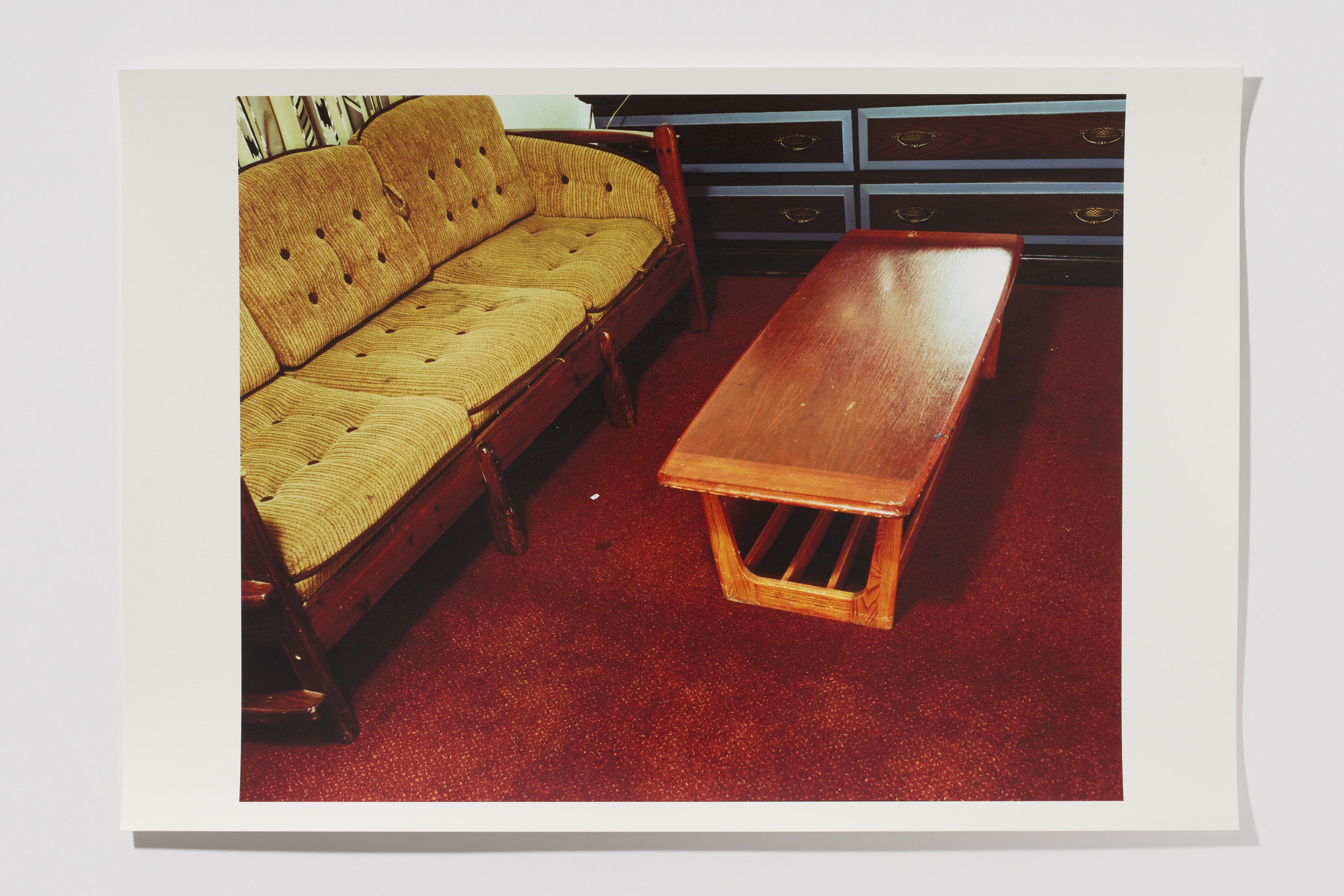
Coffee Table, Room 17, Eric Cousineau
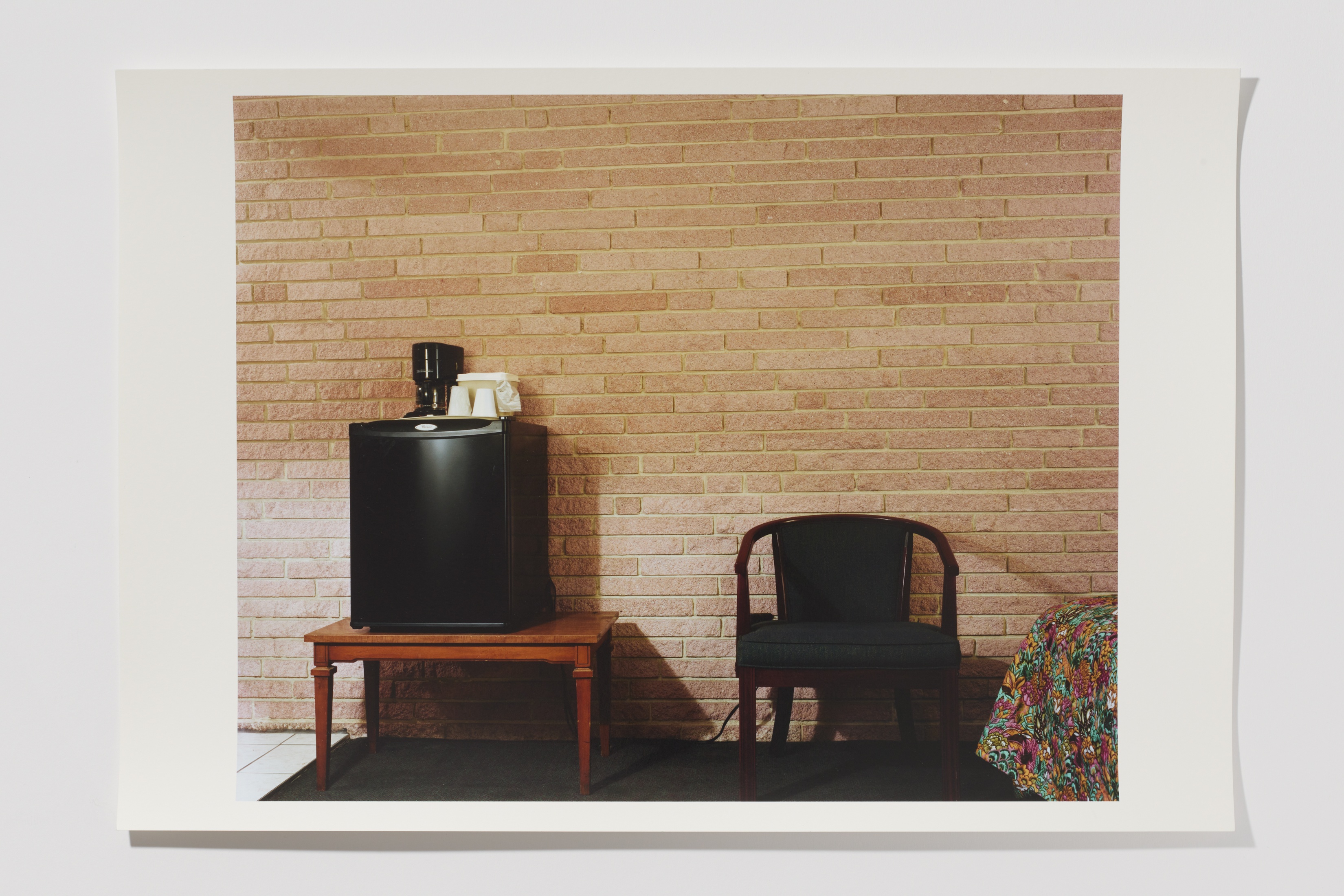
Brick Wall, Room 126, Eric Cousineau

Toilet, Room 273, Eric Cousineau
